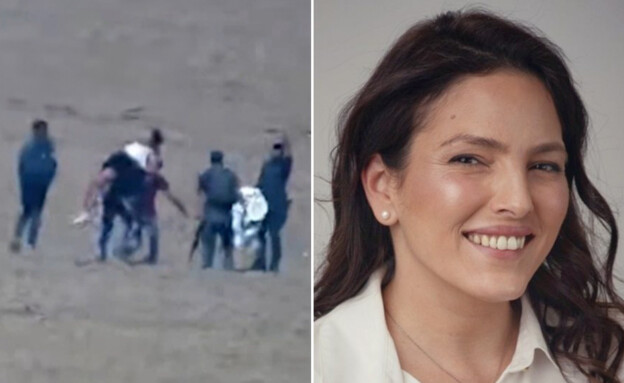“One of the immediate reactions of people in a stressful situation is the attempt to be liked, to establish a personal relationship, to find some kind of common language and to treat the other party as a human being, in the hope that he will treat him the same way”
Dr. Eidit Gutman
Sosna, who was kidnapped from her home in Gaza City on October 7, tells the American newspaper about her first period of captivity in Gaza, during which she was held by a terrorist who identified herself as Muhammad. In the interview, she explains how she tried to connect with him through questions about Arabic words she heard on TV, and even promised him money from her family if she returned to Israel unharmed. “Amit had to focus on the human and vulnerable sides of the kidnapper, and no – she wouldn’t have lasted,” explains Dr. Gutman. According to her, in order to survive, she made herself curious, interested and tried to show him that she was a human being and not an enemy. “One of the immediate reactions of people in a stressful situation, is the attempt to be liked, to establish a personal relationship, to find some kind of common language and to treat the other party as a human being, in the hope that he will treat them the same way in return.”
“It is possible that Amit perceived the citizens as being more similar to her, the victim”
Dr. Eidit Gutman
Despite her difficult situation, Sosna managed to show empathy towards the citizens and children in Gaza who were subjected to the Israeli attack, and wondered why Hamas members did not build shelters for them. “I think about growing up in this way, it’s scary,” she said in an interview with Ronan Bergman and Patrick Kingsley. It’s hard not to wonder how she still has compassion left in these moments, which are unbearably difficult. Dr. Gutman explains that “it is possible that Amit perceived the citizens as being more similar to her, the victim. She was where children are and in some ways felt like them, in a situation where she doesn’t have food, she doesn’t have the most basic security and the whole existence is chaotic for her. Despite the difficulty, Susanna managed to preserve her humanity. She didn’t give in to the here and now and the most primitive emotions, but continued to think, analyze, see things and zoom out, that’s what people did in the Holocaust.”
Amit’s courage should also be emphasized throughout. Already in the first hours of the October 7 attack, Sosna was recorded fighting and physically struggling with the terrorists who kidnapped her to Gaza. From the shocking interview we can learn that even during captivity she continued and tried to resist the abuse. “A brave colleague,” states Dr. Gutman. “Even under these shocking conditions, she chose not to be a ‘passive victim’, but managed to be something else. She tried to conduct some kind of negotiation, she was proactive, she didn’t raise her hands and wait for her death.” The doctor also points out that usually when prisoners are held captive for a long time, their humanity is taken away from them. “They are turned into a lump of meat. This is actually the disaster and horror that they try to inflict in such situations of captivity. Even though they tried to take control from Sosna, you can see her fight in everything she did and still does.”
